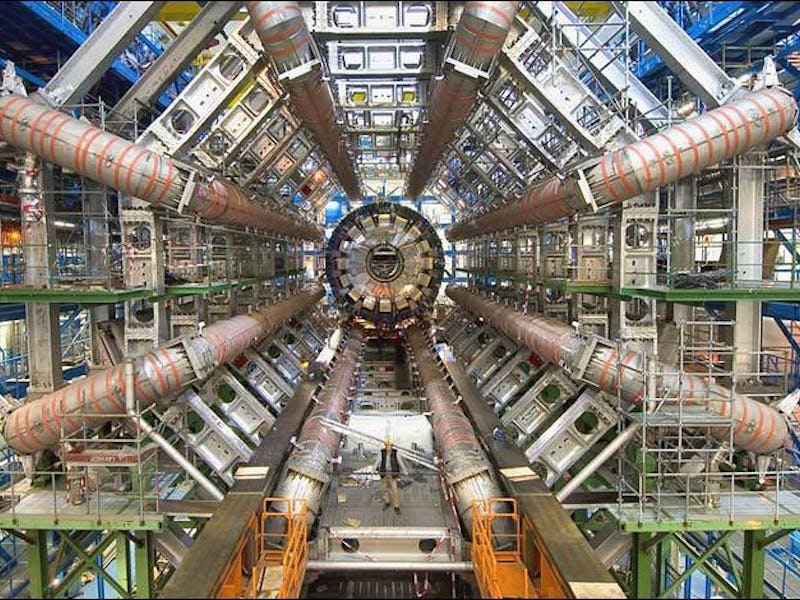Why China Wants to Become a Supercolliding Superpower for Particle Physics
Yes, the Central Committee is interested in research. But they've got other interests as well.

The U.S. and Europe have dominated particle physics research since the discovery of the electron in the late 19th century. When it comes to studying the behavior of atoms, the technology, resources, and expertise belong almost solely to the West.
So it was minor news when, in the summer of 2014, China began moving forward on a proposal to build to a pair of high-energy particle colliders. Most physicists around the world assumed the effort would constitute a modest step forward into advanced physics research. China was, observers concluded, testing the accelerated waters.
Last month, however, the country formally announced that it would begin construction in 2020 on what will be the world’s most powerful supercollider — a system that would dwarf the Large Hadron Collider at CERN in Geneva, Switzerland, where the Higgs boson, or “God particle,” was discovered. Not only would the project create the world’s most powerful tool for this type of research, it would create the most powerful tool for some time. Austerity measures across Europe have put a squeeze on research funding, especially for projects that lack immediate practical value. America doesn’t have a project on this scale in the works.
China, meanwhile, is pouring yuan into theoretical research. The goal is to do science, certainly, but it may have more to do with relevance. China wants to join the international physics club and economics have given it an opportunity to do just that.
The goal behind supercollider complexes is to smash particles together at velocities close to the speed of light, in order to recreate conditions that were similar to the high-energy environment after the Big Bang. China’s supercollider — if all goes well — would get closer to these conditions than we’ve ever been able to. “[The] LHC is hitting its limits of energy level,” Wang Yifang, director of the Institute of High Energy Physics at the China Academy of Sciences, told the China Daily. “It seems not possible to escalate the energy dramatically at the existing facility.”
An example of simulated data from the LHC at CERN, where a collision of two protons produces a Higgs boson.
China’s scientists believe their supercollider, which could be about seven times more powerful than the LHC, will be able to generate millions of Higgs boson particles for study and experimentation. The LHC is about 17 miles in circumference. The Chinese supercollider would be a staggering 49.71 miles — large enough to circle Manhattan like a hyperspeed subway.
Still, the biggest obstacle isn’t building the thing — China has a great track record of building large stuff — but staffing it with credentialed scientific personnel. Though China can build the world’s most powerful accelerator complex, the country is going to have to look elsewhere for talent if they really want to take advantage of it. Presumably part of the project for those brought on will be building native capacity.
Physics research has, for the most part, been a very international endeavor that encourages strong cooperation between researchers from different nations. The supercollider may be China’s way of breaking into the international research scene with a splash. If they have the best technology, they will undoubtedly attract big scientists from all over the world.
“This is a machine for the world and by the world: not a Chinese one,” Wang said.
That sentiment is in line with China’s efforts over the last decade to assert itself scientifically. Its space program has made great strides in the last 20 years and it’s the third-largest producer of research articles, behind only the U.S. and the European Union. That said, there are lingering concerns about the quality of studies coming out of China. Western scientists tend to not take the work at face value.
And it might be unwise to take the supercollider plans at face value either. The Chinese government has an annoying penchant for announcing outlandish R&D plans that are totally unfeasible and the final design for the facility won’t be ready until 2018. Nevertheless, it would probably be a huge mistake to doubt the Central Committee’s seriousness. In just two decades’ time, China could very well be the world’s largest manufacturer of the God particle. CERN won’t sit empty, but employee retention may become an issue.